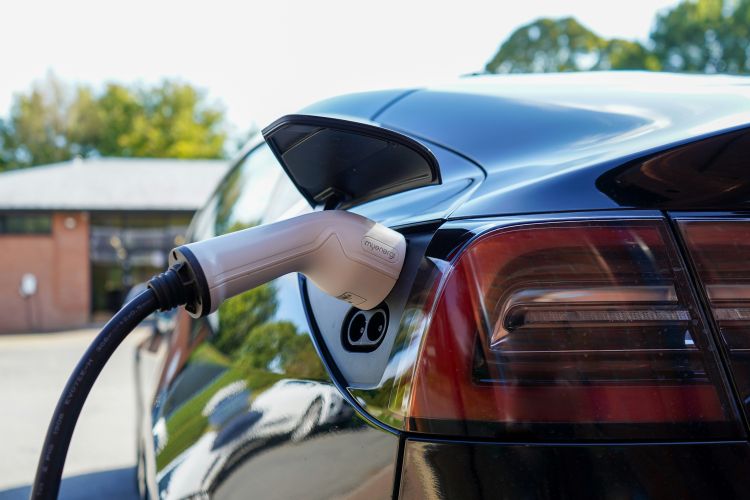
Electric vehicles are seen as the future of sustainable mobility, both in India and around the world. The global shift towards EVs has been driven by mounting concerns over air pollution, rising fossil fuel costs, and the urgent need to combat climate change. Yet, questions are raised about the long-term viability of EVs, especially in a price-sensitive market like India, where subsidies have played a crucial role in their adoption.
Union minister for road transport and highways Nitin Gadkari’s recent comments about EV subsidies have sparked debate. While asserting that EVs no longer require subsidies due to declining battery costs, Gadkari left the door open for further incentives, should other ministries deem them necessary. This raises a key question – can India’s EV market sustain itself without continued government support?
READ | Digital divide in FDI and India’s quest for global relevance
A subsidy-driven start for EVs
India’s transition to EVs has been heavily dependent on government initiatives, particularly the Faster Adoption and Manufacturing of Electric Vehicles (FAME) scheme. Launched in 2015, FAME incentivised EV adoption through subsidies and tax breaks, particularly for two-wheelers which form the bulk of India’s vehicle population. FAME 2.0, introduced in 2019, expanded these benefits, leading to a surge in EV sales, particularly in the two-wheeler segment, where companies like Ola Electric and Ather Energy saw significant growth.
However, the abrupt withdrawal of FAME 2.0 incentives in early 2024 marked a turning point. EV manufacturers and consumers were caught off guard, leading to a noticeable dip in sales. The withdrawal came at a time when EV penetration in India was still modest — about 2% for passenger vehicles and 6% across all vehicle classes. The sudden shift in policy raised concerns about the market’s readiness to stand on its own feet.
The impact of subsidy withdrawal
The removal of subsidies has immediate and significant consequences. Without government support, EVs — still more expensive than their internal combustion engine (ICE) vehicles — became less affordable, in the price-sensitive market. This has dampened consumer enthusiasm, with sales slowing across segments. The impact is most acutely felt in the two-wheeler market, where affordability is paramount.
Yet, despite these challenges, the Indian EV market has shown resilience. State-level incentives, such as those provided by Delhi and Maharashtra, have helped mitigate the impact of the withdrawal of central subsidies. Moreover, growing consumer awareness about the environmental benefits of EVs, coupled with the rising cost of petrol and diesel, continues to support demand.
Technological advancements, particularly in battery efficiency and charging infrastructure, have also played a role. Gadkari’s optimism about the falling price of lithium-ion batteries reflects a broader trend that could drive costs down further. Currently, battery prices have fallen from $150 per kilowatt-hour to around $108, with projections suggesting further decreases to $100 in the near future. This could bring EVs closer to price parity with ICE vehicles by 2026, reducing the need for government support.
The infrastructure gap
A key barrier to mass EV adoption in India remains the inadequate charging infrastructure. While cities like Delhi and Bengaluru are making strides in setting up public charging stations, much of India remains underserved. The lack of a reliable and widespread charging network discourages many potential buyers from making the switch. Long charging times and the limited range of affordable EVs further exacerbate the problem, particularly for long-distance travel.
Charging infrastructure is not just a concern for India. Globally, countries like the United States are grappling with similar issues. The need for consistent policy support and investment in infrastructure is clear, as without it, the transition to EVs will remain sluggish.
A shifting global narrative
India’s EV journey is also unfolding against a backdrop of shifting global sentiments. European carmakers like Volvo and Mercedes-Benz, once committed to going all-electric, are now reassessing their strategies. This change has been prompted by the arrival of cost-effective Chinese EVs, as well as challenges related to the environmental impact of battery production and the fact that many countries, including India, still rely heavily on coal-generated electricity to power their EVs.
Moreover, the rise of hybrids—particularly in India—presents a viable alternative to fully electric vehicles. The success of models like the Toyota Innova Hycross and Maruti Suzuki Grand Vitara Hybrid suggests that consumers are gravitating towards self-charging hybrids as a bridge between ICE and EV technologies.
Future of electric vehicles
India’s ambitious goal of achieving 30% EV penetration by 2030 faces numerous challenges. While the government’s push for local manufacturing and reduced dependence on imports aligns with broader economic goals, inconsistent policies and market uncertainties have created obstacles for both manufacturers and consumers.
Yet, the long-term outlook for EVs remains positive. A variety of powertrain options—biofuels, hybrids, and electric—are likely to coexist for the foreseeable future, each serving different segments of the market. EVs will continue to play a crucial role in reducing carbon emissions, but they are unlikely to completely replace ICE vehicles in the near term.
For India, achieving its EV ambitions will require a holistic approach — consistent policies, continued support for infrastructure development, and innovative solutions to the problems of battery obsolescence and depreciation. With the right mix of government support, technological advancements, and industry cooperation, India’s EV future can be bright. However, for this vision to become a reality, all stakeholders must be aligned in their goals, ensuring that the country remains on the path toward sustainable mobility.
Anil Nair is Founder and Editor, Policy Circle.

